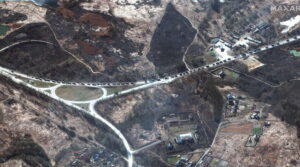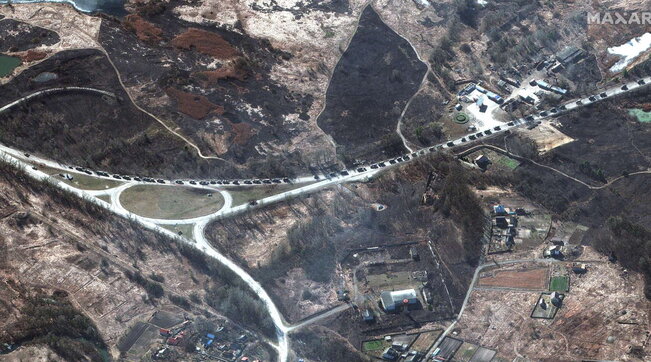Bombs on cities: the Kremlin adopts the strategy of terror

TORONTO – In all the wars of the last century there have been images destined to remain etched in the collective memory. Photos that shake public opinion, shots capable of capturing the moment of the turning point, or the suffering of a people, or the absurdity of war.
The snipers of Sarajevo, the victims of phosphorus bombs in Iraq, the photo of little Kim Puch running away naked and crying in Vietnam in 1972: snapshots that do not need captions or explanations, insights or analysis. They are images that alone tell a story, offer a cross-section of the war that a written description will not be able to adequately explain.
The satellite photos published in recent days of a Russian military convoy over 60 kilometers long and directed towards Kiev are the plastic representation of what is happening on Ukrainian territory: the disproportion of the forces in the field, the numerical strength of the Russian military apparatus and the real will of the Kremlin, which carries out a façade negotiation and which, at the same time, it continues with its true military objectives.
Tanks, armored vehicles, military means for transporting troops, heavy artillery pieces, trucks with missile launchers form this endless convoy, which passes through Ukrainian territory along a road around which Moscow fighter jets have made scorched earth.
In short, it seems that the worst is yet to come for the people of Kiev, who already today had to suffer heavy bombing around the state TV tower with numerous civilian victims. During the Russian attack on the headquarters of Ukrainian TV, a monument in the Holocaust memorial of Babyn Yar was also damaged. The bombing would have caused 5 deaths.
But in general, according to the news coming from the front, the Kremlin seems to have changed its strategy. Putting aside the aspirations of a blitzkrieg that would lead to the conquest of Kiev in a couple of days and the fall of President Volodymyr Zelensky – and this also because of the unexpected effectiveness and tenacity of the resistance of the Ukrainian forces – Moscow has changed its approach, targeting the cities. In addition to Kiev, today the most violent bombings took place in Kharkiv, where the Regional Government Palace was hit and where, for the umpteenth time, there were numerous civilian casualties in the residential areas of the city.
Against the background of a horizon that appears increasingly gloomy, hope remains hanging by a thread of negotiation, assuming that vladimir Putin has the real will to reach a truce. The new round of negotiations is scheduled for today after monday’s round, which did not lead to concrete results. Meanwhile, Russian Defense Minister Sergei Sojgu has announced that military operations will continue until Ukraine is “demilitarized and denazified.”
It then continues with Putin’s rhetoric of Kiev in the hand of a group of pro-Nazi nationalists with Russian troops in action to liberate the country. Too bad that there is an incontrovertible fact against this narrative: Ukrainian President Zelensky is Jewish, his grandparents were interned in Nazi concentration camps during the Second World War. Very difficult that he is a Nazi.



